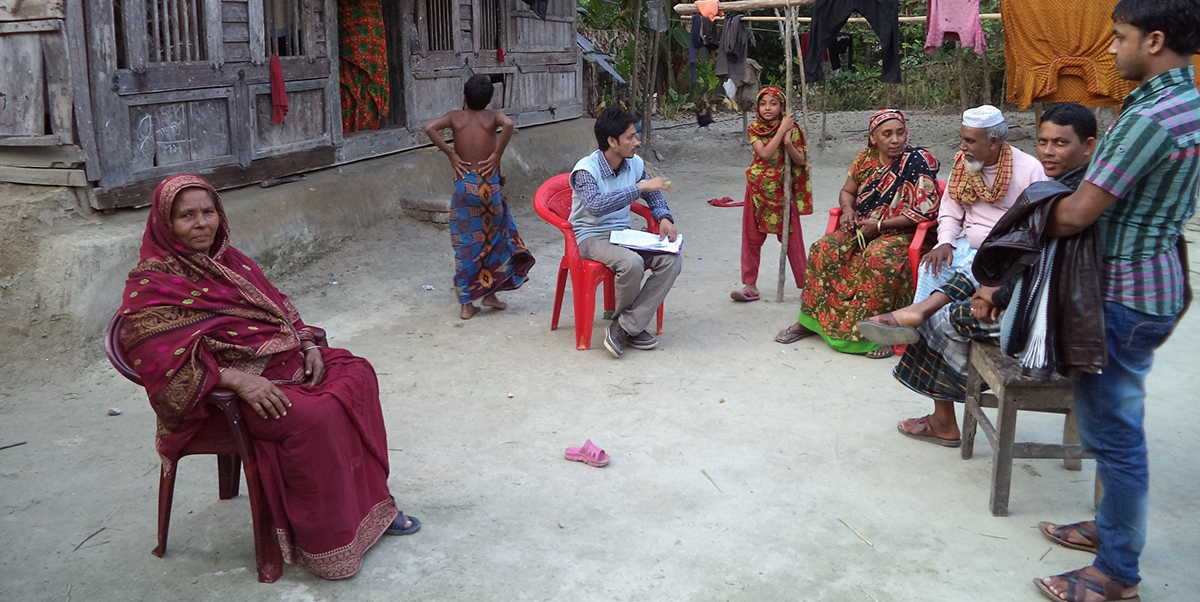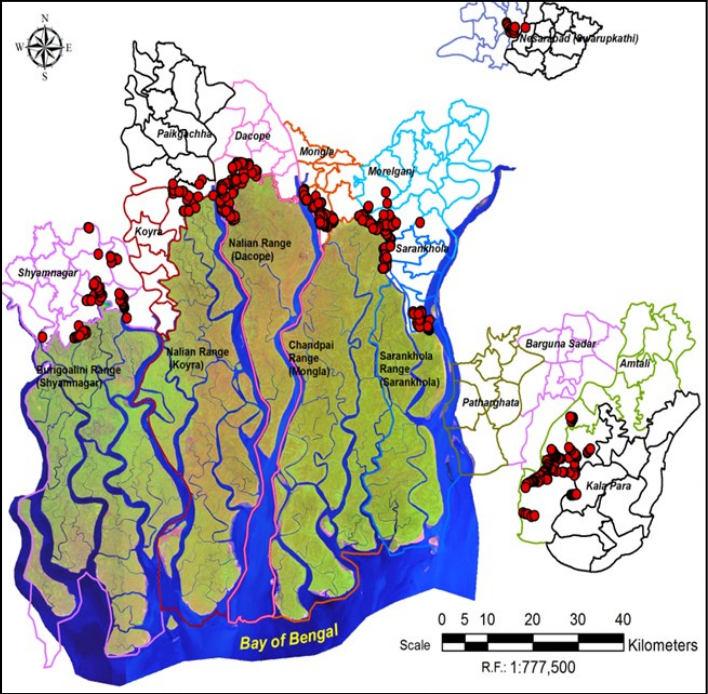
Resource
Pioneering Mangrove Valuation Research (Under USAID CREL Project in Bangladesh) (2015-2018)
More than 3.5 million people in Bangladesh depend on the Sundarbans mangrove forest for their livelihoods. Located in southwest Bangladesh on the border with India, the 140,000 hectare UNESCO World Heritage site is the largest mangrove forest in the world.
Winrock’s USAID-funded ClimateResilient Ecosystems and Livelihoods (CREL) project has supported a first-ofits kind, on-the-ground assessment to determine the economic value of the services provided by the Sundarbans.
Services provided by the Sundarbans mangrove forest include forest products such as roof thatching; livelihoods for fishermen; protection from cyclones; flood regulation; and tourism. CREL partnered with Winrock’s John D. Rockefeller 3 RD Scholars Program to commission a multidisciplinary team with expertise in environmental economics, conservation biology, geographic information services (GIS), and land use planning.
Several studies have attempted to place a dollar value on Sundarbans services, but have relied on proxy indicators from mangroves in other countries. The CREL/JDR 3RD team interviewed 400 Sundarbans tourists and 1,525 households in villages adjacent to the Sundarbans to collect original data.
Findings Include:
- The value of tourism and cultural services is US $53 million/year;
- The value of avoided storm damages is between US $98 million and US $132 million/year; and
- The value of livelihood activities for the 2 million inhabitants of the Sundarbans is $296 million/year.

Informing Policy
As a result of meetings between the CREL/JDR 3RD mangrove team and Bangladesh Forest Department staff, the updated 2015 draft of the country’s Protected Area Rules permits “development of eco-friendly tourism services in forest Protected Areas.” Previously, no outside entities could operate eco-tourism inside the Sundarbans reserve.
Also influenced by the JDR 3RD team’s study, the Protected Area rules include a provision to seek funding for Sundarbans conservation from payments for ecosystem services.
The Bangladesh Department of Environment (DOE) mentioned the JDR 3RD team’s economic valuation research in its fifth National Report to the Convention on Biological Diversity, and has requested recommendations from the team to inform their rules for Ecologically Critical Areas.

